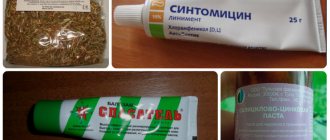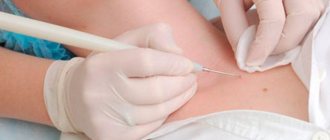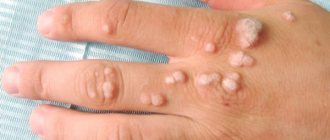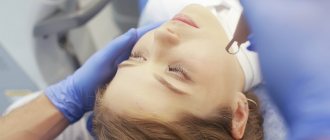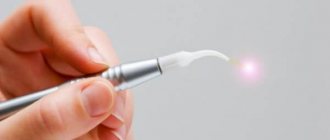Bloody calluses occur on the hands and feet when the skin is forced to be squeezed or rubbed. A blister filled with red exudate is a rather painful formation. In most cases, bleeding calluses are not considered a serious injury. The blisters go away on their own over time. However, you need to be able to properly relieve discomfort, prevent infection of the inflamed area and treat formations that have caused complications. Blood calluses are eliminated using hardware methods in medical institutions, medications and folk remedies.
Description
A callus with blood is a compacted surface layer of epithelial tissue filled with lymphatic exudate. The amount of blood in the substance depends on how badly the capillaries located in the skin are damaged. If the blood vessels are significantly injured, blood abundantly fills the internal space of the callus.
Blood blisters are more likely to form on the feet:
- on the top of the fingers;
- in the interdigital space;
- on the heels;
- at the bottom of the foot, on the front part bordering the toes.
When performing labor-intensive mechanical work with hand tools, a bloody callus may form on the upper limbs:
- on the inner surface of the palms;
- on the fingers.
Causes
Several factors lead to the appearance of blood calluses:
- active rubbing of the skin in one place;
- sweaty feet;
- wearing uncomfortable shoes;
- neglect of hygiene procedures;
- vitamin A deficiency;
- fungal infections affecting the feet;
- diabetes.
Uncomfortable shoes are the main cause of bloody calluses on your toes, heels and feet.
Rough seams, straps, fasteners and other accessories damage the skin. The skin of the feet is especially vulnerable in hot weather and excessive sweating. High-heeled shoes lead to blisters . In women, the toes are most affected. In high-heeled shoes or sandals, the load is distributed unevenly, with most of it falling on the front of the feet.
In shoes with a closed heel, blisters with blood form in the heel area. The non-standard anatomical structure of the foot leads to calluses. With poorly developed subcutaneous fat tissue, the fingers touch and rub against each other when moving, which leads to the formation of calluses.
It is necessary to carefully approach the choice of shoes. Buy only those pairs that do not cause discomfort during trying on.
Why are bloody blisters dangerous?
Ordinary calluses do not harm human health, but only cause discomfort when moving. But when the bladder is opened, there is a high probability that dirt will get into it, along with which an infection will penetrate. Pathogenic microorganisms lead to the development of the inflammatory process.
The greatest predisposition to adverse effects from calluses are people who suffer from vascular diseases, diabetes mellitus, and disorders of the nervous system. In such patients, even a small lesion of the skin can cause inflammation, during which the skin takes a long time to heal. Therefore, doctors advise that if you have such diseases, you should be especially careful about the skin of your feet.
Infection can be recognized by the following signs:
- Soreness in the affected area.
- Tugging callus.
- Redness and swelling of the skin.
- Increase in temperature in the damaged area.
- Cloudiness of the liquid inside the bubble.
If such symptoms occur, you should consult a doctor immediately.
Professional treatment
Calluses on the palms or feet cause pain and discomfort. An infection enters the wound through the opened blister. The damaged area becomes inflamed.
Doctors do not recommend opening blisters on your own. If the blister bursts, you need to disinfect the wound. The skin cannot be removed; it protects the surface of damaged tissues from infection. Blisters that have turned into dry formations are removed with a laser or liquid nitrogen.
Laser removal
Removing calluses with a laser beam is a safe and painless procedure. The patient is given local anesthesia before removal of the formation .
The laser beam burns out the blister in a matter of minutes. The damaged epithelium is cauterized by powerful radiation. The bleeding stops instantly and the wound is disinfected.
After removing the callus, the doctor treats the lesion with an antiseptic and makes a bandage using sterile napkins and a bandage. The laser leaves no traces on the skin - scars or pigment spots.
To prevent the wound from becoming inflamed, the patient must regularly treat the damaged skin using antiseptic solutions.
Elimination with nitrogen
Freezing calluses with liquid nitrogen is an effective procedure. Tissues destroyed by extreme cold become necrotic and flake off. Excessively low temperatures disinfect the wound surface and destroy pathogenic microorganisms. At the site of damage, healthy epithelial tissue quickly grows.
After the procedure, there are no cosmetic defects left - scars and pigmentation.
Pharmacy products
Minor calluses are treated with various medications:
- disinfectants - hydrogen peroxide, tea tree oil, potassium permanganate solution;
- patches - Compid, H Dr.House;
- creams - Bepanten, Rescuer, Zinc paste, Erythromycin ointment.
Plasters
For treatment, 2 types of patches are used:
- ordinary;
- special.
A circle matching the diameter of the blister is cut out of an adhesive plaster and glued to the damaged area. Apply ointment to the blister and cover the lesion with a solid sticker.
A special patch is more convenient and more effective than regular adhesive tape. The product is securely attached to the skin, accelerates the healing of damaged epithelium, and protects against infection from penetrating into the wound.
Such products are equipped with a hydrocolloid pad and a ring with a bactericidal composition. The active substance dries, disinfects, relieves pain, itching and inflammation.
To combat calluses use:
- Salipod;
- Compeed;
- Cosmos;
- Urgo;
- House.
Ointments, creams
Paste-like medications help treat calluses . Ointments and creams are used for 7 days. To remove chafing use:
- Salicylic ointment;
- Bensalitin ointment;
- Levomycetin;
- Karavaev balm;
- Levomekol;
- Cream Doctor;
- callus fluid.
Ointments and creams soften keratinized epithelium, suppress pathogenic microflora, dry, accelerate the regeneration of damaged tissues, stop the development of complications, and cleanse the wound of pyogenic exudate. Under the influence of drugs, dry formations soften and peel off. Wet calluses dry out and heal.
Treatment at home
Most people are not ready to see a doctor with such a small problem as a red callus, but prefer to treat blood blisters with home remedies. You can reduce pain and speed up healing with the help of folk remedies and medications.
Traditional methods
When treating blood calluses, it is important to prevent them from becoming infected. To do this, you can use various treatment methods, which are based on the healing properties of herbs.
- Decoctions of chamomile and calendula are used to prepare baths. The affected leg should be dipped in a warm infusion for 10 to 15 minutes. This will help relieve inflammation and speed up skin healing.
- If, after such a bath, you apply aloe or plantain to the blood callus, secure it with a bandage and leave it overnight, then in the morning a positive result will be noticeable. The skin will begin to tighten and the pain will decrease significantly.
- It is allowed to wipe bloody calluses on the feet with an alcoholic infusion of propolis. It activates metabolic processes in the skin, accelerating healing.
- Grind the potatoes into a paste, wrap in gauze and apply to the sore leg overnight. The root vegetable relieves swelling and reduces pain.
- Even ordinary table salt can help fight a blood callus on the heel. You can make baths with it that will dry and relieve inflammation, and disinfect a bloody blister. You can also apply a saline bandage at night.
Traditional methods
Traditional medicine quickly gets rid of calluses on the palms and feet. To eliminate formations, steam baths and applications with herbal ingredients are used.
Folk remedies have a bactericidal, wound-healing and anti-inflammatory effect.
Steaming
Baths effectively remove bloody calluses. The procedure is performed if the blister has not opened. Aspirin is added to hot water (1 tablet per 1 liter of liquid).
The feet float in the solution until the liquid cools, usually 15-20 minutes. Steamed skin softens, dead tissue is easily removed with pumice. The damaged area should be treated carefully, without causing pain or causing additional injury. To eliminate callous formation, 1 procedure is not enough.
To completely remove compacted tissue, several sessions are performed.
Celandine juice
The herbal extract effectively treats calluses filled with blood. Celandine juice can be purchased at a pharmacy. The medicine is bottled in convenient bottles with a dispenser. The liquid is dripped onto the lesion without affecting the surrounding healthy tissue.
Raw potatoes
The raw potato pulp is wrapped in a sterile napkin and fixed on the damaged skin. The procedure is done before bedtime. The compress is removed in the morning.
Aloe
Aloe helps cure blood calluses. In the evening, the pulp of the leaf is applied to the injury and secured with a bandage. In the morning the application is removed. The callus goes away after a few sessions.
Other
Callous formations heal quickly:
- Compresses with table or sea salt. Prepare a 10% salt solution. Before going to bed, a napkin soaked in liquid is applied to the lesion, secured with a bandage, and left until the morning.
- Moisten blood calluses with alcohol tincture of propolis. The drug stimulates metabolism in epithelial tissues and accelerates healing.
- Soap baths. Laundry soap shavings and tea soda are mixed in a ratio of 1:3. Take 4 tablespoons of the mixture and dissolve in 2 liters of warm water.
- Salt baths. For 1 liter of hot water take 5 g of table or sea salt. The solution dries, disinfects and stops the inflammatory process.
Foot baths are done 2-3 times a week. The temperature of the healing solution is 38-40 ℃. The duration of the procedure is 15-20 minutes.
How to properly puncture a blood callus
It is not advisable to puncture the callus yourself at home, as this can lead to infection. It is recommended to wait until the blister heals. If it is not possible to see a doctor, then you can try to open the bloody blister, but only if it can break through on its own and causes acute pain.
- Before piercing, prepare a needle; it is not recommended to use a pin because it is not sharp enough. Disinfect the tool and thoroughly wash your hands and the area where the callus is located.
- Make several careful punctures along the sides at the base of the blister, without touching the dome of the callus, so that the skin does not break when squeezing out the liquid. Do not press hard, let the outflow be slow, but make sure that all the exudate (liquid released during inflammation) flows out.
- After puncturing the blood blister, apply an antiseptic and a sterile bandage to the affected area. Try to provide minimal friction to the area where the callus was, choose shoes that do not squeeze your toes. Treat the wound until complete recovery and change the bandage at least 1 to 2 times a day.
It is undesirable to treat a blood callus with alcohol, brilliant green or iodine - they dry the skin, slowing down its healing.
Preventing abrasions
In order for blood calluses to stop bothering you, you must follow preventive measures:
- Buy shoes according to your foot size. You should only wear a pair that is comfortable, does not pinch, does not constrict your fingers and does not rub your skin. Shoes made from natural, soft, breathable materials are ideal. In summer, you should wear open models without rough elements and accessories.
- Care for shoes: wash and disinfect.
- Perform hygiene procedures, especially in hot weather. Wash your feet, do baths and massages, clean off rough skin with pumice, apply special cosmetic creams.
- Use talc, anti-callus insoles and plasters.
- Choose the right socks. A pair of wrong-sized feet made from synthetic materials increases the risk of blisters.
- Treat fungal infections promptly . With these pathologies, calluses are not uncommon.
Callous formations with blood cause discomfort. The damage causes severe suffering if a blister breaks. The wound hurts excruciatingly and does not heal for a long time. You should always have a patch with you. The sticker will prevent the formation of large calluses and will shorten the healing time of injured skin.
Signs of infection
It is necessary to promptly treat and properly care for the sore foot to avoid infection of the callus. The entry of pathogenic bacteria or viruses can lead to numerous unpleasant consequences, including blood poisoning or amputation. Signs of infection:
- Local redness of the skin around the callus,
- Increased temperature and pulsation in the affected area of the skin,
- Hyperemia (swelling), swelling and constant pain,
- Possible pus formation
- When the lymphatic system is damaged, the lymph nodes become enlarged and unpleasant sensations appear in them.



